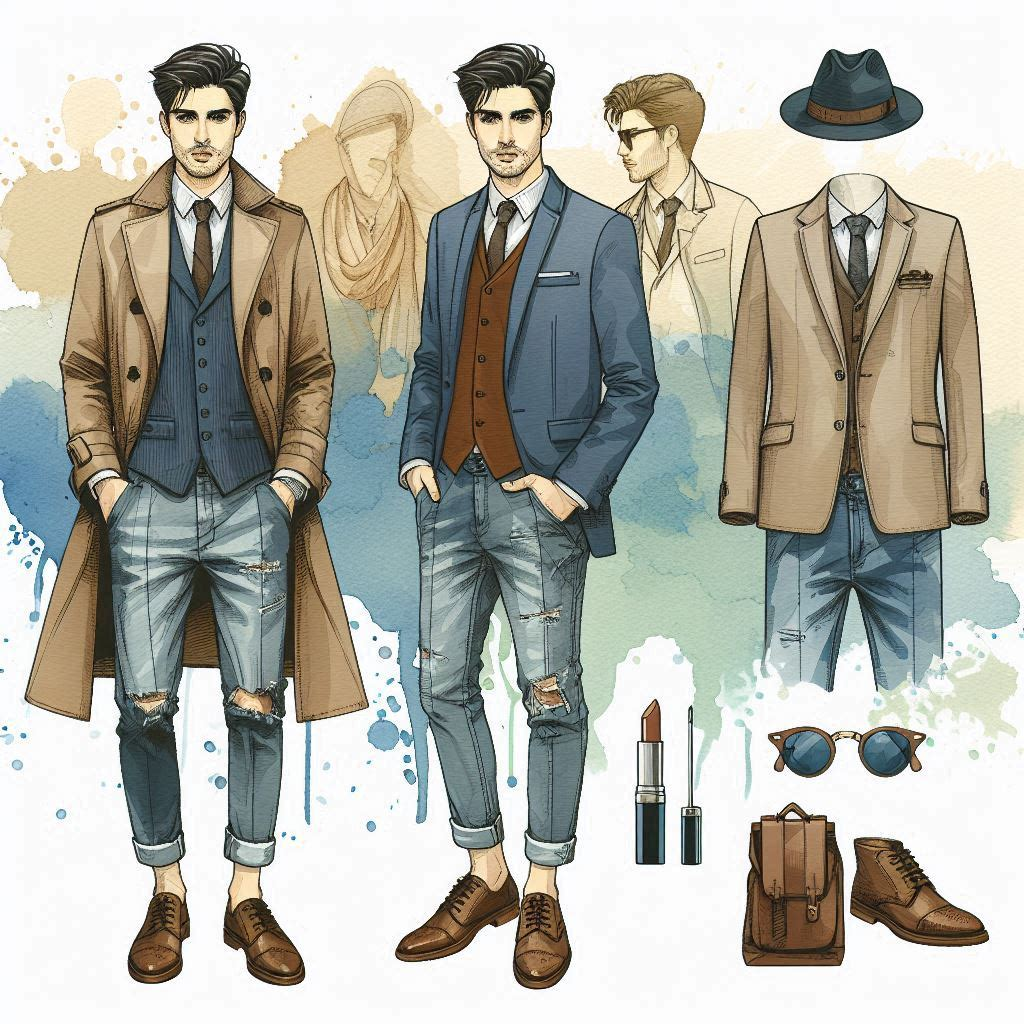Understanding Style in Fashion: Meaning, History, and Future Trends
Fashion is more than just clothing; it is a reflection of culture, identity, and personal expression. In this article, we will explore the meaning of style in fashion, delve into 20 significant fashion styles throughout history, and discuss what fashion might look like in 2025.
What is Style in Fashion?
Style refers to the distinctive appearance or design of clothing and accessories. It encompasses various elements, including color, fabric, silhouette, and overall aesthetic. In fashion, style is not just about trends; it is about how individuals express themselves through their clothing choices.
The Importance of Style:
- Personal Expression: Style allows individuals to showcase their personality and creativity.
- Cultural Reflection: Fashion styles often reflect the cultural and social dynamics of their time.
- Historical Significance: Different styles can signify historical events, movements, or changes in society.
20 Important Fashion Styles in History:
1. Victorian Style (1837-1901):
- Description: Characterized by corsets, long skirts, and intricate details.
- Why Created: Reflects the values of modesty and femininity during Queen Victoria's reign.
2. Flapper Style (1920s):
- Description: Short dresses, bobbed hair, and a carefree attitude.
- Why Created: Symbolized women's liberation and the Jazz Age.
3. Art Deco (1920s-1930s):
- Description: Bold geometric patterns and luxurious fabrics.
- Why Created: Represented the opulence and modernity of the era.
4. Hippie Style (1960s-1970s):
- Description: Tie-dye, bell-bottoms, and bohemian accessories.
- Why Created: A response to social upheaval and a quest for peace and love.
5. Punk Style (1970s-1980s):
- Description: Leather jackets, ripped jeans, and bold hairstyles.
- Why Created: A rebellion against mainstream culture and fashion norms.
6. Goth Style (1980s-1990s):
- Description: Dark clothing, dramatic makeup, and Victorian influences.
- Why Created: An expression of individuality and a reaction to societal norms.
7. Minimalism (1990s):
- Description: Simple lines, neutral colors, and functional designs.
- Why Created: A reaction against the excesses of the 1980s.
8. Streetwear (1990s-Present):
- Description: Casual clothing, often with graphic designs and logos.
- Why Created: Emerged from urban culture and youth movements.
9. Athleisure (2010s-Present):
- Description: Athletic wear designed for both exercise and casual wear.
- Why Created: Reflects the growing trend of health and fitness in daily life.
10. Retro Style (2000s-Present):
- Description: Nostalgic fashion inspired by past decades.
- Why Created: A way to celebrate and reinterpret previous styles.
11. Bohemian Style (1960s-Present):
- Description: Flowing fabrics, ethnic prints, and layered accessories.
- Why Created: A celebration of artistic expression and free-spiritedness.
12. Preppy Style (1950s-Present):
- Description: Polo shirts, khakis, and classic patterns.
- Why Created: Originated from Ivy League schools, symbolizing affluence and tradition.
13. Androgynous Style (1970s-Present):
- Description: Blurring gender lines with unisex clothing.
- Why Created: A challenge to traditional gender norms in fashion.
14. Cottagecore (2010s-Present):
- Description: Romantic, vintage-inspired clothing with a focus on nature.
- Why Created: A reaction against urbanization and a desire for simplicity.
15. Cyberpunk (1980s-Present):
- Description: Futuristic, edgy styles with neon colors and tech-inspired elements.
- Why Created: Reflects the intersection of technology and society.
16. Sustainable Fashion (2010s-Present):
- Description: Eco-friendly materials and ethical production practices.
- Why Created: A response to environmental concerns and fast fashion.
17. Luxury Streetwear (2010s-Present):
- Description: High-end brands merging with streetwear aesthetics.
- Why Created: A blend of exclusivity and urban culture.
18. Y2K Fashion (2000s):
- Description: Bright colors, low-rise jeans, and tech-inspired accessories.
- Why Created: A reflection of the optimism and technological advancements of the early 2000s.
19. Normcore (2010s):
- Description: Embracing blandness and everyday clothing.
- Why Created: A reaction against the pressure to stand out in fashion.
20. Maximalism (2010s-Present):
- Description: Bold patterns, vibrant colors, and layered textures.
- Why Created: A counter-movement to minimalism, celebrating excess and individuality.
What is Fashion Style in 2025?
As we look ahead to 2025, fashion is expected to evolve significantly. Here are some anticipated trends:
1. Sustainability at the Forefront:
- Why: With increasing awareness of environmental issues, sustainable practices will dominate the fashion industry.
2. Tech-Infused Fashion:
- Why: The integration of technology in clothing, such as smart fabrics and wearable tech, will become more prevalent.
3. Inclusivity and Diversity:
- Why: A growing demand for representation in fashion will lead to more inclusive sizing and diverse models.
4. Personalization:
- Why: Advances in AI and data analytics will allow for more personalized shopping experiences.
5. Cultural Fusion:
- Why: Globalization will continue to influence fashion, leading to a blend of styles from different cultures.
Conclusion
Fashion is a dynamic and ever-evolving field that reflects societal changes, cultural shifts, and individual expression. By understanding the history of fashion styles and anticipating future trends, we can appreciate the rich tapestry of style that continues to shape our world. Whether you’re a fashion enthusiast or just curious about the industry, staying informed about these trends will help you navigate the exciting landscape of fashion in the years to come


Comments ()